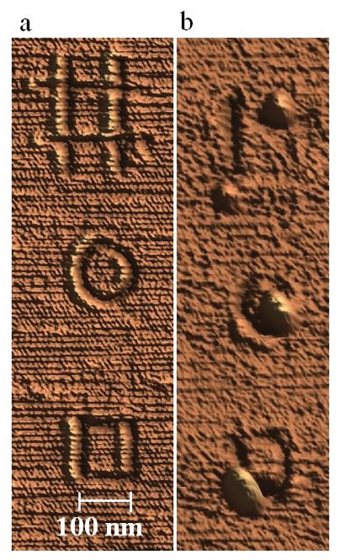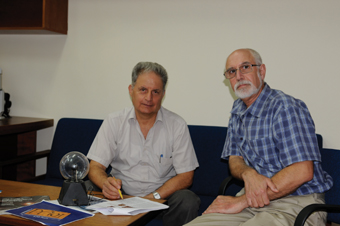How is it possible to write in lines whose thickness is much smaller than the wavelength of light

The sculptor Michelangelo Buonrotti (1475 - 1564) used to say that his sculptures had always existed inside the blocks of marble, and that he only removed the unnecessary stone parts from them. The hammer and chisel used to remove the material can, in the right hands, reach a fairly impressive level of precision and finesse, but when removing extremely small amounts of material, much finer tools are needed. This is how various tools have been developed over the years, including laser beams capable of carving fine grooves in a material.
But just as a chisel is not able to cut a slit narrower than its thickness, so the laser light is also limited to a slit whose thickness is similar to the wavelength of the light itself, and is measured in individual microns or fractions of microns (a micron is a millionth of a meter). When it is necessary to cut even narrower grooves (for example, in the design of electronic circuits in semiconductor chips), finer tools such as electron beams are used, which can be used to mark and cut "channels" much smaller than one micron in thickness.
Another method of "writing" with extremely thin grooves is based on the Klia-Barak, a well-known patent invented by Benjamin Franklin more than 200 years ago. When you want to protect a building from a lightning strike, you place a pointed metal rod above the building, ground the rod to the ground, then, when the lightning strikes the rod, the electric charge flows to the ground and does not harm the house. A lightning arrester works on the principle that a pointed metal rod centers electric fields around it very efficiently. A more modern application of this principle is made in a near-field microscope, which makes it possible to measure with a spatial separation of a few nanometers (a nanometer is a billionth of a meter). Using this device, the scientists manage to approach the surface to within a few nanometers. They direct a laser beam to the vicinity of the tip of the pointed rod (and this time the tip is pointed to a few nanometers), and accordingly, the electric field of the light is much more concentrated and much stronger. To do this, approach the surface in a controlled manner. However, because of the forces acting between the stylus and the surface at these tiny distances, it is very difficult to hold the "stylus" at a controlled distance of a nanometer or two from the surface.

In order to bring the tip of the "engraver" or "pen" to a minimal distance from the surface, Prof. Yachiam Pryor from the Department of Chemical Physics and Dean of the Faculty of Chemistry at the Weizmann Institute of Science, and Dr. Alexander Milner from his research group, developed a method to approximate the "pen" to the surface The method is based on moving the "pen" while constantly vibrating microscopically. The vibration prevents sticking in short ranges, and allows the "pen" to be placed only one nanometer away from the surface (that is, one billionth of a meter away), without the risk of sticking.
After developing the ability to bring the stylus to the surface, the scientists continued and "wrote" on the surface using two different methods: on surfaces made of materials with a relatively low melting point, they adjusted the working conditions so that the "pen" heated up to a controlled temperature of hundreds of degrees Celsius, according to required to melt the material and remove it. When they wanted to engrave in a material whose melting point is higher (for example, gold), they produced a greater intensity of light at the meeting point between the light and the material, and took advantage of the amplification effect near the tip of the "pen".
In this way, it is possible to write on the surface with lines whose thickness is much smaller than the wavelength of light, with great precision and with a power that allows engraving even on the surface of hard metals. In the next phase of their research, the scientists will try to perform spectroscopic measurements and characterize extremely small areas, with the aim of developing possibilities to measure low concentrations, to the point of being able to measure and identify the presence of a single molecule.
More on the subject: Technion researchers managed to put the Tanach on the head of a pin

One response
It is also possible to engrave with intelligent nano-technological robots.